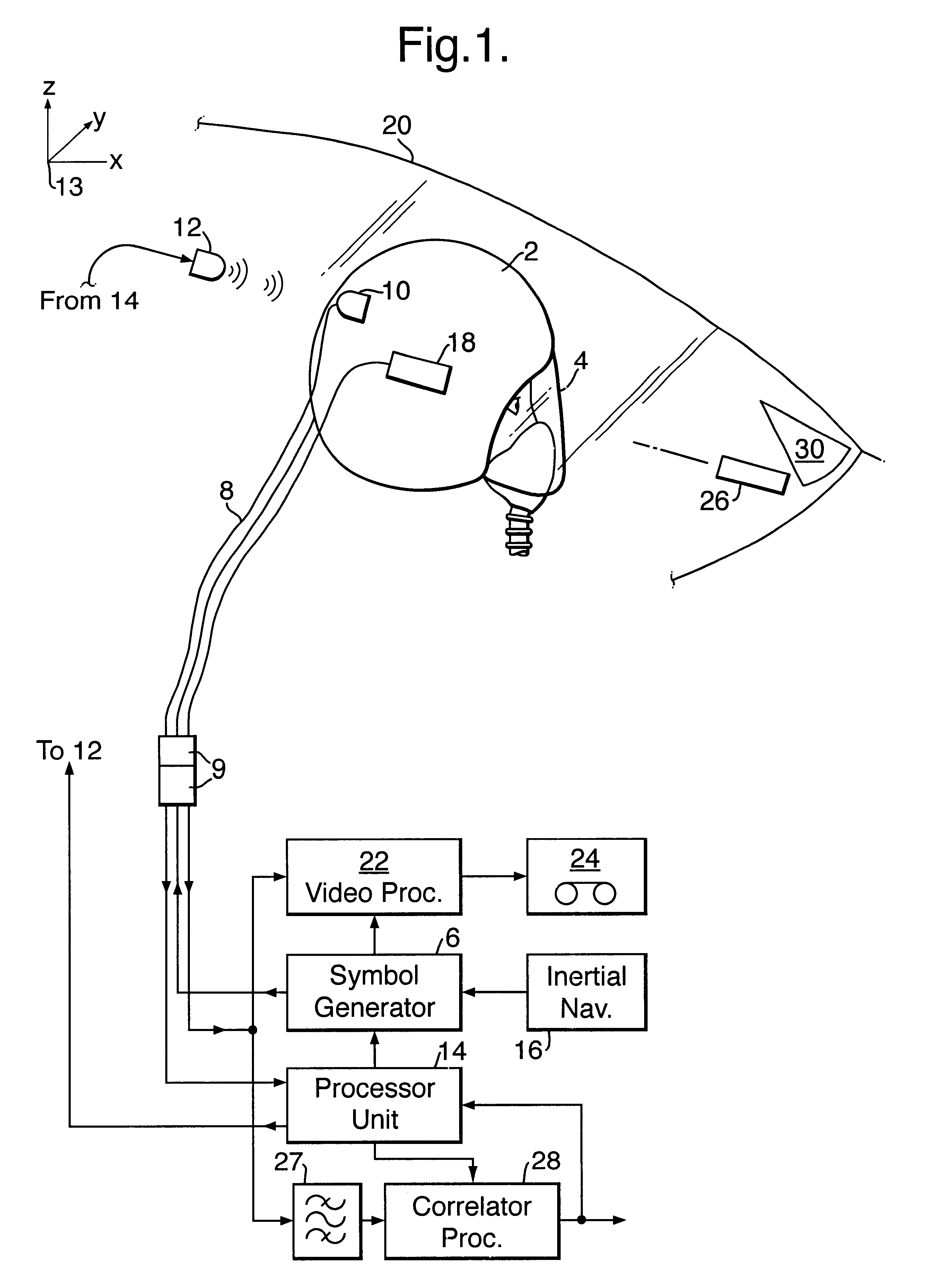Head tracker system
a head tracker and tracker technology, applied in the field of head tracker systems, can solve the problems of restricting the user's movement, unable to compensate for mechanical misalignment of the hmd, and limited accuracy of some of the systems
- Summary
- Abstract
- Description
- Claims
- Application Information
AI Technical Summary
Benefits of technology
Problems solved by technology
Method used
Image
Examples
Embodiment Construction
Referring to the drawing there is shown a helmet 2 which constitutes a head mounting for attachment to the head of a pilot, the helmet being provided with a visor 4. Internally the helmet 2 is provided with a helmet mounted display (HMD) device (not shown) which is arranged to project a display onto a partially reflective inner surface of the visor 4 or discrete eyepiece so that the display is superimposed upon at least part of the view seen by the pilot through the visor 4. As is known the symbology displayed on the HMD is generated by a symbol generator 6 which is located within the aircraft. The signals used to drive the HMD are passed to the helmet 2 along an umbilical cord 8 which is provided, in a known manner, with a quick release connector arrangement 9 fixed inside the cockpit.
The helmet 2 supports a sensor unit 10 which comprises part of a magnetic head tracker system in conjunction with a transmitter unit 12 which is secured to the cockpit canopy close to the helmet 2. Th...
PUM
 Login to View More
Login to View More Abstract
Description
Claims
Application Information
 Login to View More
Login to View More - R&D
- Intellectual Property
- Life Sciences
- Materials
- Tech Scout
- Unparalleled Data Quality
- Higher Quality Content
- 60% Fewer Hallucinations
Browse by: Latest US Patents, China's latest patents, Technical Efficacy Thesaurus, Application Domain, Technology Topic, Popular Technical Reports.
© 2025 PatSnap. All rights reserved.Legal|Privacy policy|Modern Slavery Act Transparency Statement|Sitemap|About US| Contact US: help@patsnap.com


